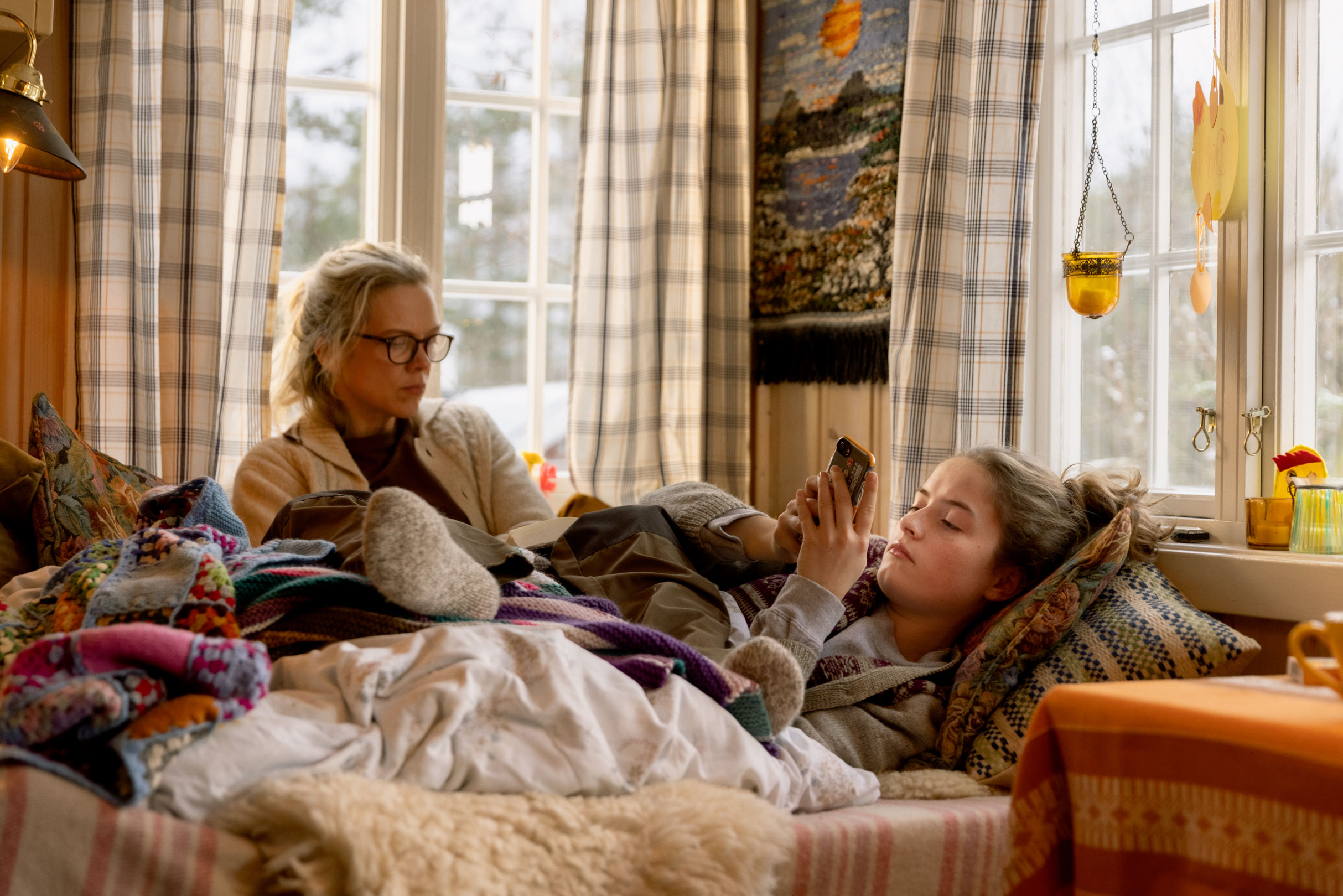Pop Culture to Avoid, from ‘Contagion’ to ‘Black Hole’
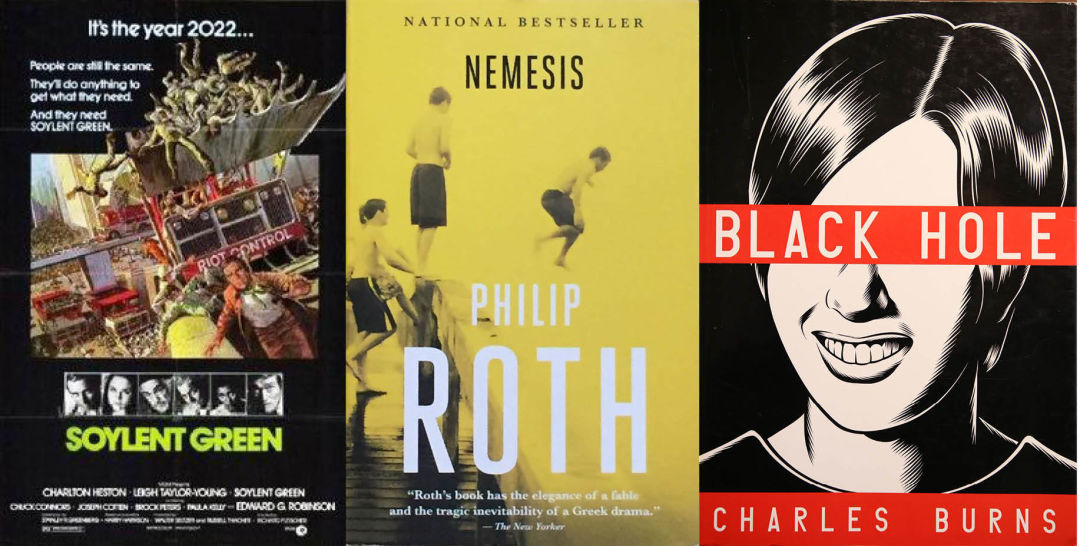
Admit it. You keep thinking about those sheets hanging on the doors of the homes of the affected in Outbreak, or that scene in a Toronto theater the night the Georgia Flu first hits the news in Station Eleven. Should you lean into the darkness and watch or read these worst-case virus scenarios? That depends on your personality and anxiety levels, of course, but we’re mostly putting these on a shelf for later, when, we hope, we can take a break from worrying about our friends, parents, grandparents, neighbors, children, jobs, homes, etc.
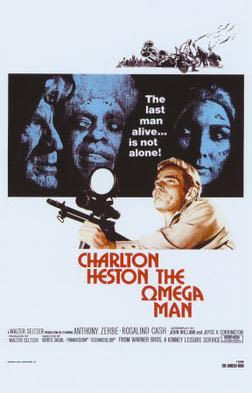
Image: Courtesy Warner Bros.
Charlton Heston’s Apocalypse Oeuvre, 1968–2000
When the Cold War threatened nuclear annihilation in the mid-20th century, what did the world do? It kept casting Charlton Heston as a potential last savior of the human race and/or Western individualism, and then when that stopped he kept casting himself. Heston’s turns as an astronaut who doesn’t realize he’s back on Earth in Planet of the Apes (1968), as an army scientist who thinks his blood will make other survivors immune to a world-ending plague in The Omega Man (1971), as an NYPD detective getting to the bottom of just what the title superfood was made of in Soylent Green (1973, though the elders-in-danger movie was set in, gulp, 2022), and, in real life, as the longtime NRA president who invited pro-gun-control veep Al Gore to pry Heston’s own firearms (and his freedom!) from his “cold, dead hands” (2000) are reminders of end times we just don’t need right now. —Margaret Seiler
The Stand, 1978
Yes, you should definitely avoid this postapocalyptic book about a killer strain of influenza that wipes out the world. But even during non-pandemic times, this is one to miss. I’m not a hater. There’s lots of Stephen King novels I do like. The Stand, though, is truly King at his worst: an edge-of-your-seat first 150 pages, then 800 pages of meandering nothingness that barely advance the plot, and finally, mercifully, a slap-dash ending. Those page counts may be off—it’s been a while since I read it—but the structure holds. In his autobiographical book On Writing, King himself admits he had no idea how to end the story and shoehorned in storylines later to make it fit. It’s a real mess. I have not seen the TV movie adaptation, but I’m told by PoMo style editor Eden Dawn that it contains an “absolutely amazing awful demon with a mullet.” So there you go. —Marty Patail
Outbreak, 1995
In the ’80s, German director Wolfgang Peterson followed up his award-winning Das Boot with a gift to the world: The NeverEnding Story, complete with its Limahl theme song. But then he turned on us with Outbreak, and there is no way I’m watching this deadly-epidemic-attacks-small-town disaster movie right now. It’s not just the scene in the movie theater when a droplet of someone’s cough- and sneeze-driven goo lands in the mouth of another moviegoer, spreading the fatal virus. It’s not just that we’re asked to believe Dustin Hoffman and Rene Russo’s characters were once married. It’s not just that they kill off a pre-McDreamy Patrick Dempsey way too soon. Really, it’s that I don’t need to see Morgan Freeman in yet another cliché morally superior role, and I don’t need to see Kevin Spacey at all, thank you. (But could I watch Peterson’s Air Force One and imagine how President Harrison Ford and Vice President Glenn Close would be handling our current situation? Yes, yes, I could.) —MS
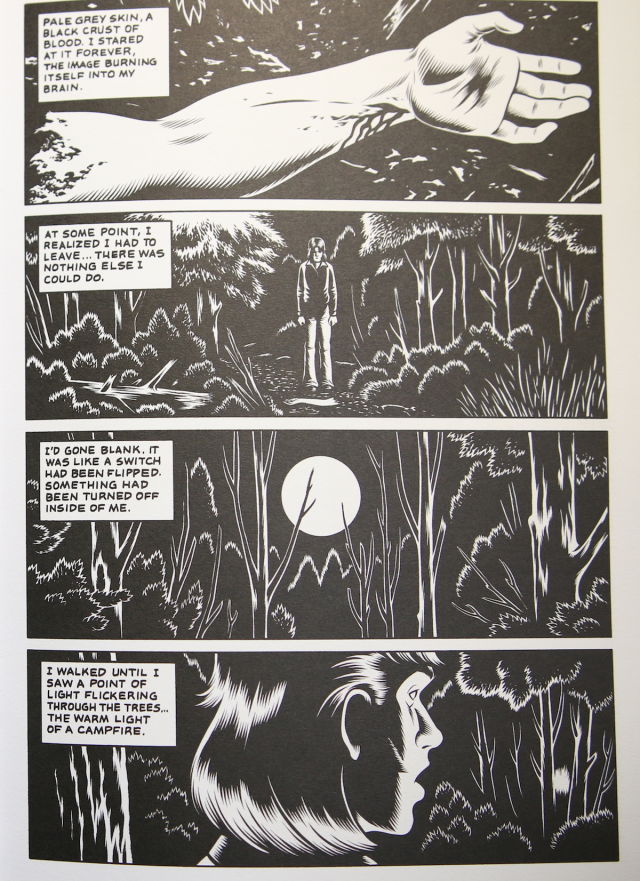
Image: Courtesy Pantheon
Black Hole, 1995–2005
It’s the 1970s in suburban Seattle, and there’s a bug going around. The disease, transmitted through sexual contact, manifests itself in a number of ways, each uniquely grotesque. One character grows an extra mouth on their neck, another grows a tail, another grows a pair of horns. Amid this teenage plague, highlighting high school anxiety, isolation, and savagery, a series of murders begin to unfold. Black Hole, the Harvey Award–winning comic book series by Charles Burns, released as a collection in 2005 by Pantheon Books, is as horrifying as it is beautifully designed. Given Seattle’s current status as one of the epicenters of coronavirus and our global anxiety of catching the bug, Black Hole might be a dangerous read at the moment. —Gabriel Granillo
A Prayer for the Dying, 1999
So you think you’re being helpful, visiting your neighbors, checking in with the local hermit, rounding up the dead, picking up something that sick person just dropped and then not washing your hands ... ? Well, you’re not, as Stewart O’Nan reminds us in this novel about a diphtheria epidemic and mandatory quarantine in a small town in Wisconsin shortly after the Civil War. —MS
Year of Wonders: A Novel of the Plague, 2001
Why am I rereading Geraldine Brooks’s finely wrought work of historical fiction about an English village in 1666 that places itself into quarantine after a peddlar from London sells a resident a bolt of cloth infected with the plague? Within a year, two-thirds of the village’s residents are dead. On the brighter side (?), their actions save many, many others in their remote corner of Derbyshire, England. —Julia Silverman
The Demon in the Freezer, 2002
Disclaimer: I have not read this nonfiction book by Richard Preston, but it had been on my 2020 reading list until a couple of weeks ago. I’ll let the inside flap do the talking: “Eradicated from the planet in 1979 in one of the great triumphs of modern science, the smallpox virus now resides, officially, in only two high-security freezers, at the Centers for Disease Control in Atlanta and in Siberia, at a Russian virology institute called Vector. But the demon in the freezer has been set loose. It is almost certain that illegal stocks are in the possession of hostile states, including Iraq and North Korea. [One virologist] is haunted by the thought that biologists in secret labs are using genetic engineering to create a new superpox virus, a smallpox resistant to all vaccines.” (Preston’s The Hot Zone, based on an article he wrote for the New Yorker, was the inspiration for the film Outbreak as well as a 2019 NatGeo miniseries with Julianna Margulies.) —MP
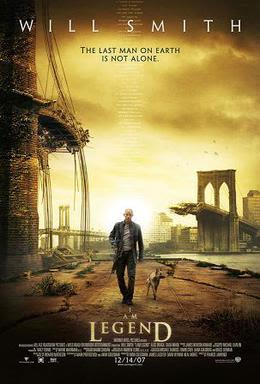
Image: Courtesy Warner Bros.
I Am Legend, 2007
As the first human trials for a COVID-19 vaccine picked up in the past few days, all I’ve been able to see is Emma Thompson grinning on the news, explaining her cancer vaccine that morphs into a species-ending illness. Richard Matheson’s pulpy zombie novel had been adapted twice (including as The Omega Man, above) before Francis Lawrence and Will Smith took it up in 2007, but their version is the only one anybody’s thinking about right now. No matter how directly those Twitter photos of a hollowed-out Times Square remind you of this movie, resist the urge to fire it up. Pandemic parallels aside, does anyone need to see Will Smith choke a German shepherd right now? —Conner Reed
The Twilight novel and film series, 2005–2012
It may be wise to avoid this no-premarital-sex, perpetual-damsel-in-distress, pseudo-Mormon-propaganda vampire romance in general, but the last thing we need right now is a reminder that 100-year-old virgin Edward Cullen originally “died” as a hot teen during the 1918 flu epidemic. And the second-to-last thing we need is all that “imprinting” business where an adult male who’s also a wolf can just announce he’s going to marry your infant daughter and it’s, like, locked in as fate. (But the first book and the third movie are, I’ll admit, sort of fun in a high school teen drama sense.) —MS
Nemesis, 2010
Normally a solid next-read choice for when you realize your book club is full of vaccine skeptics, Philip Roth’s novel set amid a 1944 polio outbreak in a Jewish neighborhood in Newark, New Jersey, might be one to save for later. A parks-and-rec counselor and coach starts losing his charges to the disease at a time when, as we learn in the coach’s chats with his girlfriend’s dad, who’s a doctor, people still didn’t understand how polio spread. If you need a jolt of Roth this spring, maybe watch The Plot Against America on HBO or reread Portnoy’s Complaint and ponder all your current social-distancing masturbation opportunities. —MS
Contagion, 2011
This classic Steven Soderbergh tying-it-all-together pandemic thriller is definitely not for public transit users right now. We get to be mad at adulterer and resource-hogging corporate business traveler Gwyneth Paltrow for her character’s poor handwashing habits (and also for Goop), sure, but it’s all sympathy and terror for the people riding the bus with her coughing infected coworker as a mysterious virus with a 20 percent fatality rate starts sweeping the world. Sure, selfness CDC scientist Jennifer Ehle is on the case, but I’d rather just watch Ehle, who played Lizzie Bennet in the 1995 BBC version of Pride & Prejudice, read parts of that novel aloud on the internet to comfort the world. —MS
Station Eleven, 2014
Getting alarming phone calls and texts from a friend who works at a hospital? So was Jeevan at the start of Station Eleven, and things got to worst-case-scenario pretty quickly. Alternating between the initial ravages of a flu pandemic and the world as it is 20 years later, this novel from Canadian writer Emily St. John Mandel (whom I always want to call Edna St. Vincent Millay, but she is not Edna St. Vincent Millay, a poet who died in 1950) is best saved for later, when you’ll have the head space to ponder passengers locked in an airplane to die on the tarmac so they don’t infect others. If you’ve been spending your quarantine time studying emergency medicine or memorizing Shakespeare soliloquys, though, this will provide some validation for you. (An HBO miniseries based on the book started filming in Chicago this winter; no release date is set yet.) —MS
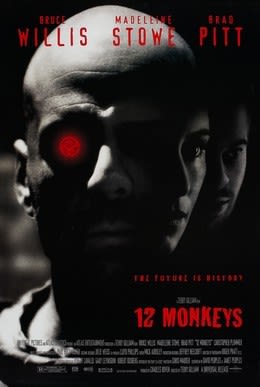
Image: Courtesy Universal Pictures
Note: We’ve left the excellent 1995 Terry Gilliam time-travel film 12 Monkeys and the not-excellent 2013 film World War Z off of this list of titles to avoid, even though they are clearly in the pandemic-panic genre. As our colleague Eden Dawn points out, “hot Brad Pitt is always kind of calming,” and a little calm might be just what we need.



